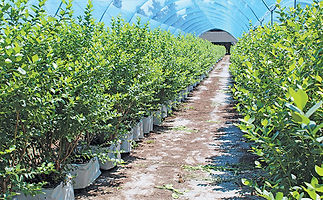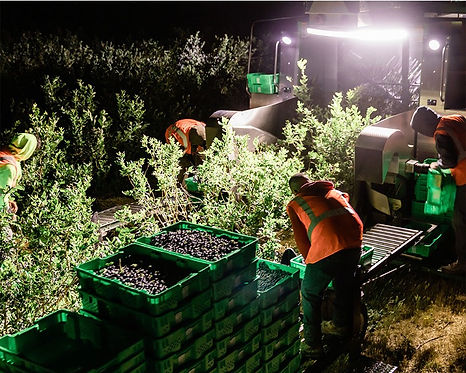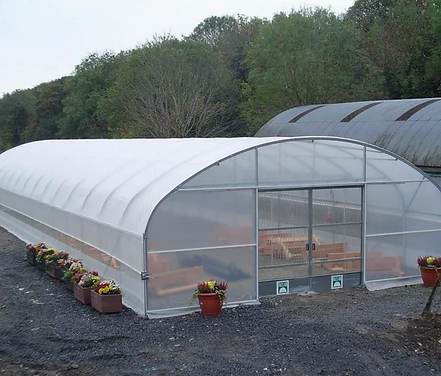
Pre-Harvest
Pre-harvest mitigation strategies are critical for protecting blueberry crops from the adverse effects of extreme heat, which can compromise yield, fruit quality, and overall plant health. By implementing targeted cooling and protective measures during key developmental stages, growers can enhance crop resilience and reduce the risk of heat-related damage.
More images of the strategies in use are located under "Photo Library".
Breeding and Cultivar Selection
Research has shown that oxidative stress is a key physiological response of highbush blueberry plants to elevated temperatures. Caused by the buildup of reactive oxygen species, this stress damages cell membranes and proteins, compromising plant health. Cultivars with stronger expression of antioxidative and protein-repairing genes show better heat tolerance, making them valuable targets in breeding programs. In British Columbia, the BC Berry Breeding Program is working to develop such resilient varieties, although the breeding cycle may take 15–20 years. In the meantime, growers may benefit from selecting existing cultivars like ‘Jersey’, ‘Elliott’, and ‘Bluecrop’, which have demonstrated greater heat tolerance through traits such as a thicker protective cuticle.
Protected Farming
low-tech greenhouses
In-Field Cooling Systems
Sprinkler and micro-sprinkler systems, which cool through evaporative processes, are highlighted for their effectiveness in reducing canopy temperature and boosting berry weight. However, these systems may also increase humidity, leading to elevated pest and disease pressure, and slightly reduce berry sugar concentration. In British Columbia, most farms use drip irrigation for water efficiency, and a dual system combining drip and micro-sprinklers shows promise—though adoption is limited by high costs, uncertainty about future heat events, and operational challenges with machine harvesting. Reflective plant sprays offer another potential cooling strategy, but their effectiveness and impact require further research under local conditions.

Irrigation Effeciency
Most blueberry producers in British Columbia have shifted from sprinkler to drip irrigation systems to improve water-use efficiency and reduce evaporation. Drip irrigation effectively mitigates drought stress during extreme heat by delivering water directly to plant roots. Although it does not offer the cooling benefits of sprinkler systems, it remains a dependable method for reducing heat-related drought damage.

Harvest Schedule
Blueberries are highly susceptible to heat damage in the period between harvest and cooling, with direct sun exposure leading to diminished fruit quality. While early morning or nighttime harvesting has proven effective in preserving quality and improving efficiency in regions like Washington and Oregon, logistical barriers in British Columbia—such as limited labor availability and closed processing facilities at night—make this strategy less feasible for local growers.

Protected Farming
Unlike open-field cultivation, low-tech greenhouses provide moderate environmental control through ventilation, insulation, and basic cooling mechanisms, helping stabilize conditions during sensitive growth phases. While high-tech greenhouses offer more precise regulation, their high cost makes them less accessible. In contrast, low-tech options are more affordable and flexible, making them a viable solution for many growers. It also emphasizes that protective measures should be applied when temperatures reach critical thresholds—32 °C during the green berry stage and 35 °C during the blue berry stage—due to the berry’s thinner wax coating early in development, which heightens heat sensitivity.

